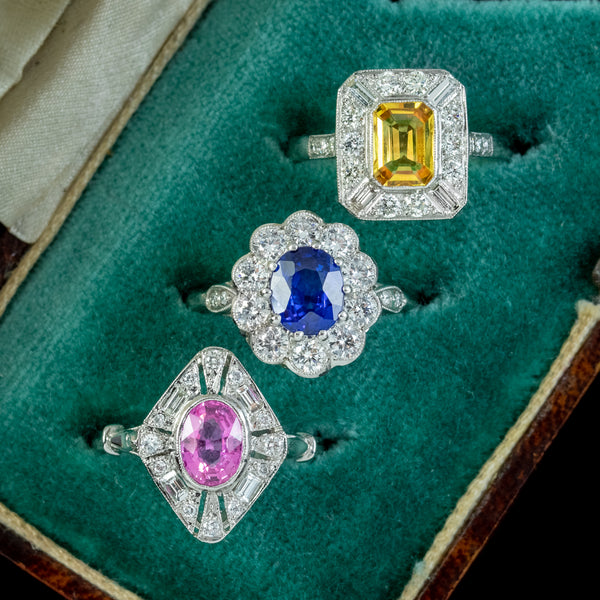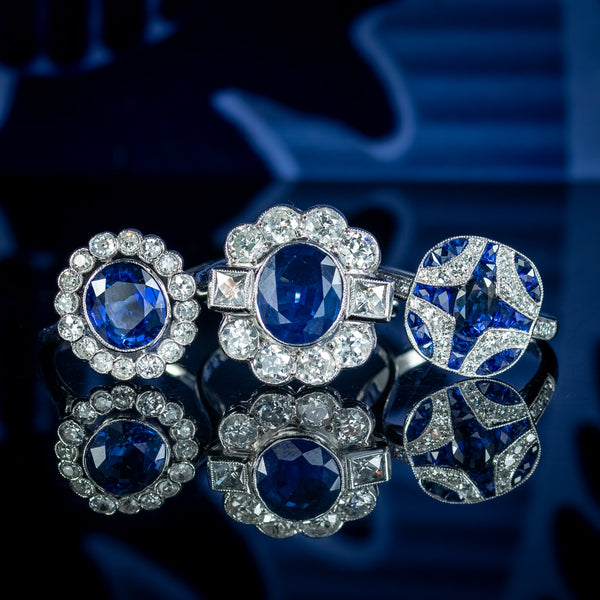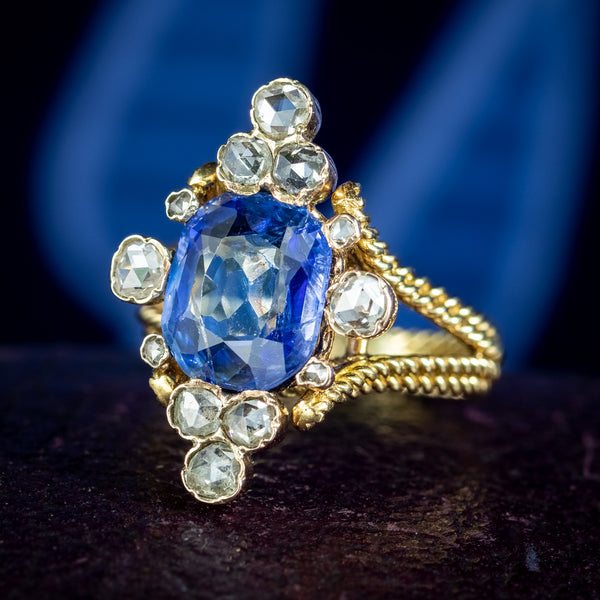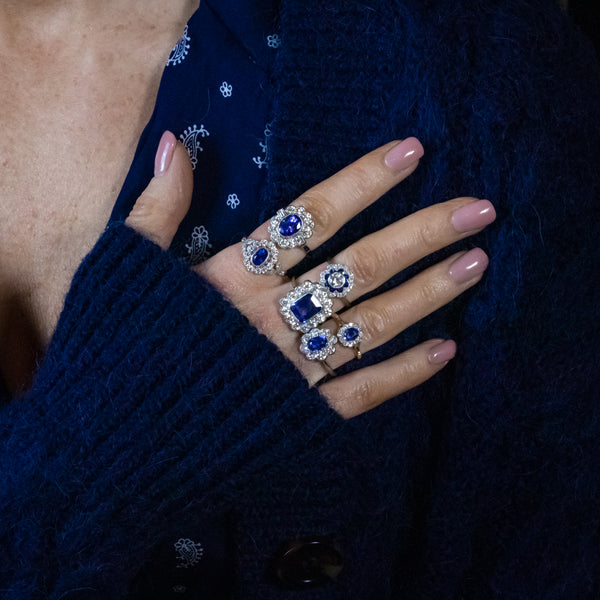Everything You Need to Know About Sapphires

Sapphires are arguably the most famous blue gemstone; sapphire blue has been consistently employed by poets to describe the sky, the ocean or the colour of a lover’s eyes, infusing the object with implied beauty and value. So it may come as a surprise to some to learn that not all sapphires are blue. In fact sapphires can come in a vast range of colours including purple, yellow, orange and green. Some varieties known as “parti sapphires” can even hold more than one colour.
Sapphires with pink or red colouration can also be found, but all but the palest of these varieties tend to be called rubies. To understand why these stones are so popular it is worth looking more closely at exactly what they are.
Origin

Both rubies and sapphires are varieties of the mineral corundum. This crystalline material forms naturally beneath the earth when flows of magma cool. Both sapphires and rubies form in a similar manner, although rubies tend to be found in marble host rock whereas sapphires are more commonly found in granite.
Corundum is an extremely robust material due to the heat and extreme pressure in which it forms. This means that the resulting gemstones are incredibly tough, with a value of 9 on the Mohs scale of mineral hardness. The only gemstones which are harder are moissanite (9.5) and diamond (10). It is this hardness which makes them ideal for jewellery as they are extremely hard wearing. It is also the reason why antique sapphire jewellery has withstood the test of time so well.
The precise colour of a sapphire is determined by the other elements present when it forms. Different concentrations of titanium, cobalt, lead, chromium, vanadium, iron, magnesium, boron and silicon will result in differing colours and shades.
Sapphires of any colour are valuable, but blue stones are the most common and recognisable, and the deeper the blue the more highly prized it is.
History

Sapphires have been valued since ancient times, and references to them, their beauty and worth, can be found in many ancient manuscripts and holy texts. The Tanakh, the sacred text of Judaism, suggests that Aaron, the brother of Moses, wore a breastplate adorned with many gemstones, including sapphires. It has also been suggested that the tablets upon which the ten commandments were first engraved were made of sapphire, which accounted for their reputed ability to damage any hammer swung against them.
The ancient Persian civilisation once believed that the world was balanced upon an immense sapphire. Adherents to the Buddhist faith held that the sapphire aided their meditation and thus assisted them in their journey towards enlightenment. A papal decree issued in the 6th century commanded that every cardinal was to wear a sapphire ring on their “blessing” hand, and this ring later came to be believed to promote chastity. In fact most of the cultures of the world have attached stories and legends to the sapphire, which speaks to its enduring popularity.
Sapphires also acquired significance in early medicine, specifically in “Lithotherapy”, a gemstone-based system of healing pioneered by 12th century Christian clergy where they were used to treat everything from nightmares to nosebleeds.
Rarity and Value

Sapphires have been consistently valued for centuries. They were once classified as one of the five Cardinal Gemstones whose worth exceeded all others, and their rarity has persisted despite advances in mining techniques over the years. One of the reasons why sapphire antique jewellery is so popular is that its value is extremely unlikely to decline – a substance beloved by so many people for so long is an extremely safe bet as an investment.
All sapphires are rare, but there are specimens whose value is exponentially higher. When sapphires form under just the right conditions they may accumulate small amounts of the mineral rutile, which forms miniscule needle-like structures within the stone. This causes the normally translucent stone to become partially opaque, and means that light shone into the stone is split into a striking white six-pointed star pattern. These “Star Sapphires” are often cut en cabochon, with a domed front and flat back, rather than faceted as a regular sapphire would be. This allows the star to be viewed clearly. Star rubies also exist and are formed in a similar manner. There are even rarer specimens where a second black star of haematite is also present, giving the stone a light and dark star at once.
If you would like to find out more about sapphires and other precious gemstones take a look at our advice centre and blog for other interesting articles.
At Laurelle Antique Jewellery we have many years of experience in finding beautiful pieces of antique sapphire jewellery for our customers. You can view our full collection here.
If you have any questions about the pieces which we sell feel free to get in touch on England: 0333 700 4500 or send us an email via enquiries@antiquejewellerygroup.com. Our team is always happy to help!



